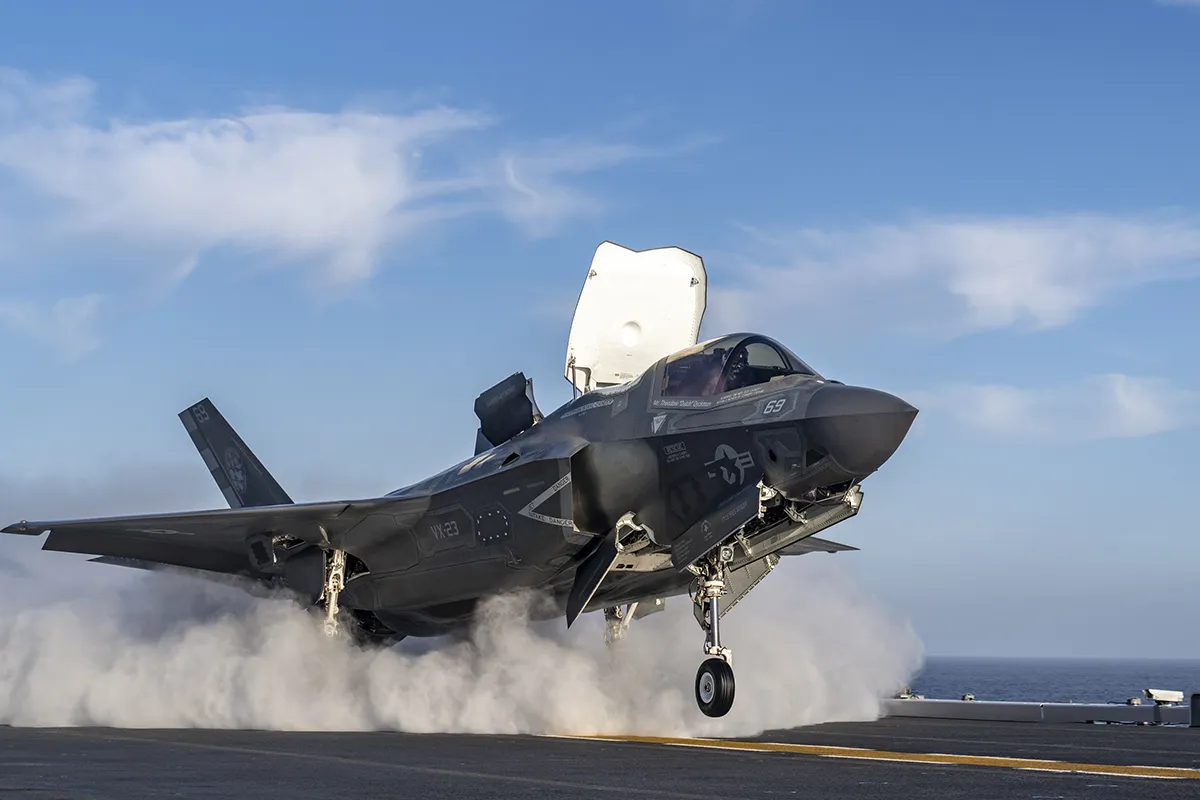It would be easy to think of transnational crime as an entirely separate challenge from US national security in the Indo-Pacific region. Most attention on transnational crime is focused on the Western Hemisphere—especially drug cartels in South and Central America and the Caribbean. But those two issues merge in an equally concerning threat to US interests: transnational crime in the Indo-Pacific.
Transnational organized crime has been increasingly recognized in recent years as a growing and significant threat to US national security. The long-standing involvement of these networks in drug smuggling, human trafficking, cybercrime, and other activities threatens the safety and prosperity of Americans. The US government first developed an initial strategy for countering transnational criminal organizations in 2011, and that strategy has continued to evolve with each administration. Traditionally seen primarily as a law enforcement problem, countering transnational organized crime is increasingly treated as a threat that requires diplomatic, intelligence, and other capabilities.
The Trump administration has placed an increased focus on these challenges, including an executive order designating drug cartels as terrorist organizations. While current emphasis has been closer to home, pressure is likely to increase on transnational organized crime not just at US borders but also in other areas where it affects US security. The Indo-Pacific is one such region that may see greater US efforts to combat transnational organized crime. Criminal networks operate from Southeast Asia across South Pacific countries such as Tonga and Fiji—and extend to the Americas. They present several challenges to US security, including the growing problem of “scam compounds,” money laundering, and drug smuggling routes, especially for fentanyl and its precursors. Some of these transnational criminal organizations reportedly have links to foreign intelligence agencies. They pose a threat to US security interests in the Indo-Pacific region, but their reach also extends to the US homeland itself.
The Threat of Scam Compounds
A good example of transnational criminal activity that is increasingly a threat to the US and its allies and partners is the rise of scam compounds. These concentrated criminal enterprises exist in several countries, especially in poorly policed parts of Myanmar and other areas of mainland Southeast Asia. Scam compounds frequently house large numbers of people—many of them coerced—engaging in cyber scams. Many are associated with organized Chinese crime and heavily target US citizens. One study by the US Institute of Peace found that “U.S. residents are now a top target of the crime networks,” losing an estimated $3.5 billion to scams originating in Southeast Asia in 2023. Operating with near impunity, scam compounds also potentially threaten US business interests and could possibly become future vectors for cyberattacks against the US homeland.
Money Laundering and Transshipment of Drugs in Oceania
Transshipment of fentanyl and other drugs via island countries in the South Pacific, as well as money laundering in these nations, have long been a concern for the United States. Small island countries such as Palau and Fiji are particularly vulnerable to transnational organized crime as they lack sufficient resources and capabilities to monitor and counter international criminal activities. As a result, some have become major transit points for drugs and precursors en route to the United States after originating in places such as Southeast Asia and China. Those same vulnerabilities allow transnational criminals to launder funds through these countries. Additionally, an increased international criminal presence in Oceania may provide potential havens for cybercrime. Countries such as Palau and Fiji lack adequate resources to successfully combat transnational criminal activities and will continue to require outside help from the United States and Australia.
Links Between Chinese Organized Crime and PRC Intelligence
A third area of concern is the reported existence of links between Chinese organized crime and intelligence services of the People’s Republic of China, which also pose potential economic and national security threats to the United States and its allies and partners. While Chinese organized crime is not solely an instrument of the Chinese government, which does crack down on organized crime within China’s borders, publicly available evidence indicates there are links between organized crime and Chinese intelligence. For example, an investigation by Pro Publica into Chinese organized crime and the US illicit marijuana trade indicates that some US officials believe there are links between Chinese crime networks and Chinese intelligence operatives in the United States.
The government and media in Taiwan have also reported on links between some Chinese organized crime groups and Chinese intelligence activities. Taiwan’s National Security Bureau recently alleged that China’s government has developed contacts with criminal gangs in Taiwan as part of an effort to infiltrate all aspects of Taiwanese society. Chinese intelligence reportedly uses contacts with organized crime groups in Taiwan to gather intelligence, identify potential targets for recruitment among military personnel and business elites, and spread pro-Beijing messages. Reports indicate that at least one Taiwan-based crime syndicate, the Bamboo Union, maintains links with Beijing.
Moreover, Taiwan’s organized crime organizations are not just active in Taiwan. Members of the Bamboo Union operate throughout Southeast Asia, as well as Australia, Canada, the United Kingdom, and the United States. Beijing therefore has the potential to use organized crime elements based in both the People’s Republic of China and in Taiwan to gather intelligence, identify recruitment possibilities, and spread its messaging throughout the Indo-Pacific region and into United States itself.
The administration’s focus on transnational crime creates the opportunity to disrupt criminal organizations and mitigate their impact on US safety, prosperity, and national security. Doing so will require a clear understanding of the issues, the ability to leverage the capabilities of regional allies and partners to reduce costs, and the aggregation and analysis of information from a range of sources to see the full picture. The threats from transnational crime in the Indo-Pacific are as complex and wide-ranging as the region itself.



